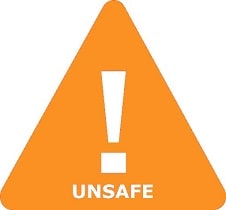Is Maternal Herpes Simplex Safe in Breastfeeding
Question
I am a breastfeeding mother and i want to know if it is safe to use Maternal Herpes Simplex? Is Maternal Herpes Simplex safe for nursing mother and child? Does Maternal Herpes Simplex extracts into breast milk? Does Maternal Herpes Simplex has any long term or short term side effects on infants? Can Maternal Herpes Simplex influence milk supply or can Maternal Herpes Simplex decrease milk supply in lactating mothers?
Maternal Herpes Simplex lactation summary

- DrLact safety Score for Maternal Herpes Simplex is 5 out of 8 which is considered Unsafe as per our analyses.
- A safety Score of 5 indicates that usage of Maternal Herpes Simplex may cause serious side effects in breastfed baby.
- Our study of different scientific research indicates that Maternal Herpes Simplex may cause moderate to high side effects or may affect milk supply in lactating mother.
- Our suggestion is to use safer alternate options rather than using Maternal Herpes Simplex .
- It is recommended to evaluate the advantage of not breastfeeding while using Maternal Herpes Simplex Vs not using Maternal Herpes Simplex And continue breastfeeding.
- While using Maternal Herpes Simplex Its must to monitor child for possible reactions. It is also important to understand that side effects vary largely based on age of breastfed child and time of medication in addition to dosage.
- Score calculated using the DrLact safety Version 1.2 model, this score ranges from 0 to 8 and measures overall safety of drug in lactation. Scores are primarily calculated using publicly available case studies, research papers, other scientific journals and publically available data.
Answer by Dr. Ru: About Maternal Herpes Simplex usage in lactation
Herpes simplex virus (HSV) causes oral (HSV type I) and genital lesions (HSV types II and I). It is considered a sexually transmitted virus. The neonatal infection is more common in case of primary infection of the mother than in case of recurrent herpetic lesions (50% vs. 5%).Most transmissions occur at the time of the partum by contact with genital lesions (Tremolada 2008).During the neonatal period the disease can be very serious; beyond this period it does not usually have serious consequences. Although HSV DNA 1 and 2 are frequently found in breast milk (Kotronias 1999), there is only one allegedly documented case of transmission of HSV-1 through breast milk in the absence of skin, oral or genital lesions in the mother (Dunkle 1979).In other cases the transmission was due to herpetic lesions in the breast (Field 2016, Parra 2013, Sullivan 1983, Quinn 1978).There are also published cases of reverse infection: oral lesions of an infant with herpetic gingivostomatitis were transmitted to the nipple of the mother (Sealander 1989 Dekio 1986) and a sexually transmitted herpetic mastitis (Brown 1996). Breastfeeding is contraindicated only if there are lesions on the breast, but it should be allowed to breastfeed a baby from the unaffected breast (Garcia-Loygorri 2015, Lawrence 2004, Henrot 2002, Grossman 1981). For other locations standard preventive measures should be taken: thorough hand washing, covering the lesions so that the infant does not come into contact with them; wear masks and avoid lip contact (kissing) if the mother has herpes in the lips or stomatitis.
Alternate Drugs for Disease, Disorder & other Mother´s Conditions.
Maternal Anemia(Safe)
Maternal Rheumatoid Arthritis(Low Risk)
Maternal Brucellosis(Low Risk)
Cancer(Unsafe)
Maternal Candidiasis(Low Risk)
Anthrax(Safe)
Maternal Cardiopathy(Low Risk)
Maternal Cold(Safe)
Cesarean Section(Safe)
Maternal Cytomegalovirus(Safe)
Chlamydia(Safe)
Maternal Depression(Low Risk)
Maternal Diabetes Mellitus(Low Risk)
Drug Addction(Dangerous)
Pregnancy(Safe)
Maternal Epilepsy(Low Risk)
Maternal Multiple Sclerosis(Low Risk)
Maternal Phenylketonuria(Safe)
In Vitro Fertilization(Low Risk)
Maternal Cystic Fybrosis(Low Risk)
West Nile Fever (WNF)(Low Risk)
Maternal Galactosemia(Safe)
Maternal Acute Gastroenteritis(Low Risk)
Giardia Lamblia(Safe)
Maternal Gonorrhea(Low Risk)
Maternal Hyperprolactinemia(Low Risk)
Maternal Hyperthyroidism(Low Risk)
Maternal Hypothyroidism(Safe)
inflammatory bowel disease (maternal)(Low Risk)
Maternal Surgery Intervention(Low Risk)
Maternal Leprosy(Low Risk)
Maternal Lyme Disease(Safe)
Augmentation Mammoplasty(Low Risk)
Breast Reduction Mammoplasty(Low Risk)
Maternal Mastitis(Safe)
Ménière(Low Risk)
Menses(Safe)
Migraine(Safe)
Maternal Myopia(Safe)
Maternal Otosclerosis(Safe)
Maternal Psychotic Disorder(Dangerous)
Maternal Rabies Infection(Low Risk)
Maternal Rubella(Safe)
Maternal Measles(Low Risk)
Vaginal Dryness(Safe)
Maternal Aids(Unsafe)
Maternal Syphilis(Low Risk)
Botulinum Toxin(Low Risk)
Maternal Toxoplasmosis(Safe)
Maternal Transplant(Unsafe)
Maternal Trichomoniasis(Safe)
Maternal Tuberculosis(Low Risk)
Maternal Varicella(Low Risk)
Maternal T-Cell Leukemia/Lymphoma 1(Dangerous)
Maternal Htlv-Ii Infection(Dangerous)
Narcolepsy(Low Risk)
Acne(Safe)
Hepatitis E(Low Risk)
Zika Virus Infection(Safe)
